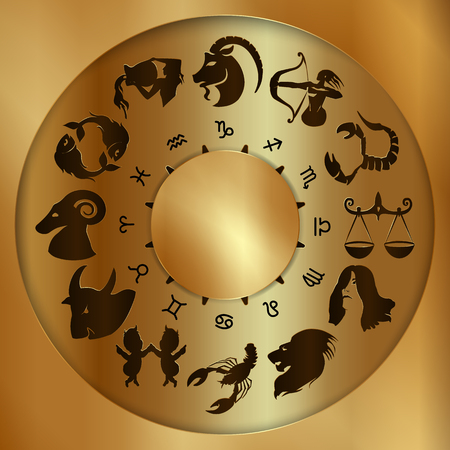Introduction to Rahu and Ketu in Indian Astrology
Rahu and Ketu, known as the lunar nodes in Indian astrology, hold immense significance within the astrological traditions of India. Unlike other planets, Rahu and Ketu are not physical celestial bodies but rather mathematical points where the moon’s orbit intersects the ecliptic. In Vedic mythology, they are often referred to as shadow planets, with their origins traced back to the ancient legend of Samudra Manthan—the churning of the cosmic ocean. According to this myth, Rahu and Ketu were formed when a demon, disguised as a god, was beheaded by Lord Vishnu; the head became Rahu and the body became Ketu. This mythological background highlights their role as powerful karmic influencers in an individual’s horoscope.
In Indian culture, Rahu and Ketu are associated with challenges, transformations, and unpredictable events. They are believed to affect various aspects of life, including accidents, obstacles, sudden changes, and spiritual growth. The influence of these nodes is deeply embedded in popular beliefs across different regions of India. Astrologers often analyze their positions during birth chart readings to predict periods of difficulties or unexpected happenings. For many Indians, remedies related to Rahu and Ketu—such as temple visits, specific rituals, or wearing gemstones—are common practices aimed at mitigating negative effects. Thus, understanding Rahu and Ketu is essential for those seeking insights into accidents and challenges as interpreted through the lens of Indian astrology.
2. Cultural Perspectives on Rahu-Ketu: Deep-rooted Beliefs in India
Rahu and Ketu hold a unique position in the Indian astrological and cultural landscape, deeply intertwined with traditional beliefs, rituals, and day-to-day decisions. These celestial nodes are not merely considered astronomical points but are revered as powerful entities influencing human destiny. Their impact is especially significant in matters related to accidents, challenges, and unexpected events, shaping the way many Indians approach risk and uncertainty.
Beliefs and Symbolism Associated with Rahu-Ketu
In Indian society, Rahu is often associated with illusion, confusion, sudden changes, and materialism, while Ketu represents detachment, spiritual growth, and past karma. The stories from ancient scriptures like the Mahabharata and Puranas highlight their origin during the churning of the ocean (Samudra Manthan), which adds to their mystical aura. Many believe that adverse Rahu-Ketu placements in one’s horoscope can lead to accidents or unforeseen obstacles.
Common Rituals and Practices
| Occasion | Ritual | Purpose | Regional Variations |
|---|---|---|---|
| During Rahu-Kaal | Avoiding auspicious activities | Prevent mishaps or failures | Observed across states but timings vary |
| Sarpa Dosha Remedies | Naga Prathishta, Puja at temples like Kukke Subramanya | Pleas for relief from accidents or chronic problems | Karnataka, Tamil Nadu traditions prominent |
| Eclipses (Grahana) | Bathing rituals, chanting mantras | Neutralize negative effects attributed to Rahu-Ketu | Pan-India with local variations in practices |
| Kala Sarpa Yoga Periods | Fasting, temple visits, charity work (daan) | Mitigate misfortunes and challenges in life journey | Practiced widely among believers in astrology |
The Role of Stories and Folklore in Daily Life Decisions
Many Indian families recount anecdotes where mishaps—such as road accidents or sudden financial losses—are attributed to “Rahu Dasha” or “Ketu Transit.” These narratives influence not only individual choices but also collective behaviors such as postponing travel during certain planetary periods or conducting special prayers before embarking on new ventures. Elders commonly advise consulting astrologers before making major life decisions like marriage or business deals.
Reflection in Modern Society
The integration of these beliefs into daily life persists even in contemporary urban settings. From IT professionals scheduling meetings outside of Rahu-Kaal to homemakers observing fasts on specific days linked to these nodes, the influence is palpable. This intersection of tradition and modernity highlights how astrological insights related to Rahu-Ketu remain relevant in managing risks associated with accidents and challenges for millions across India.

3. Astrological Analysis: Rahu-Ketu and Accidents
Within Indian astrology, the Rahu-Ketu axis is often viewed as a powerful indicator of unforeseen mishaps, accidents, and life’s unpredictable obstacles. Many classical texts such as the Brihat Parashara Hora Shastra and Phaladeepika describe how the placement of Rahu and Ketu in an individual’s horoscope can trigger periods of sudden challenges. These shadow planets are believed to govern karmic debts, illusions, and transformative events, which frequently manifest through unexpected incidents—particularly when they occupy sensitive houses like the 1st (body), 4th (vehicles/homes), 8th (longevity), or 12th (losses) in one’s natal chart.
Review of Astrological Theories
Astrologers in India commonly observe that Mahadasha or Antardasha periods involving Rahu or Ketu are marked by instability and abrupt changes. For instance, if Rahu is associated with Mars (the planet of accidents and aggression), especially in the 8th house, there is an increased likelihood of motor vehicle accidents or injuries. Similarly, transit of Rahu over natal Mars or the Lagna (ascendant) has been documented to correlate with episodes of recklessness or carelessness leading to harm.
Indian Real-Life Examples
Several real-life case studies from across India validate these astrological principles. In one notable case from Maharashtra, a young IT professional experienced a severe road accident during his Rahu Dasha with Ketu placed in the 8th house. Another example comes from Tamil Nadu, where a homemaker faced unexpected fire damage to her property coinciding with a Rahu-Mars conjunction transiting her 4th house. Such instances highlight the relevance of traditional beliefs among Indian families, who often consult astrologers after facing accidents to check for Rahu-Ketu afflictions in their horoscopes.
Cultural Context and Remedies
In Indian society, it is customary to perform rituals such as Rahu-Ketu shanti puja at major temples like Srikalahasti or Thirunageswaram to mitigate malefic effects. People may also wear gemstones like Gomed (Hessonite) for Rahu or Cat’s Eye for Ketu under expert guidance. By acknowledging both astrological theories and lived experiences, Indians continue to integrate spiritual solutions alongside practical safety measures when navigating periods influenced by the Rahu-Ketu axis.
4. Common Challenges Attributed to Rahu-Ketu Dosha
In traditional Indian astrology, the placement of Rahu and Ketu is considered highly significant in determining an individuals life path, particularly when it comes to unforeseen accidents and persistent challenges. Many astrologers across India observe that unfavorable positioning of these shadow planets—commonly referred to as Rahu-Ketu Dosha—can manifest through a variety of obstacles in different aspects of life.
Obstacles Faced Due to Rahu-Ketu Dosha
Rahu and Ketu are often linked to sudden and unexpected events. Individuals affected by their adverse influence may encounter frequent roadblocks in personal growth, education, relationships, or spiritual development. These challenges are believed to be more pronounced when Rahu or Ketu occupies sensitive houses such as the 1st, 5th, 7th, or 8th in the natal chart (Janam Kundli).
Health Issues Associated with Rahu-Ketu
According to classical texts like Brihat Parashara Hora Shastra and modern Indian astrological practice, health concerns are a common manifestation of Rahu-Ketu Dosha. The table below summarises some frequently observed health problems:
| Planetary Influence | Common Health Issues | Traditional Remedies |
|---|---|---|
| Rahu | Mental stress, addictions, skin disorders, phobias | Chanting “Om Raam Rahave Namah”, donation of black sesame seeds |
| Ketu | Allergies, joint pain, mysterious diseases, detachment issues | Chanting “Om Ketave Namah”, lighting lamps at temples on Tuesdays |
Career Setbacks Under Rahu-Ketu Influence
The professional sphere is not immune from the effects of these planetary nodes. Many Indians consult astrologers when facing repeated failures in competitive exams, frequent job changes, or business losses. Such career setbacks are often attributed to malefic Rahu or Ketu placements leading to confusion, lack of clarity, and unstable decision-making.
Cultural Perceptions and Coping Strategies
Across diverse regions of India—from Kerala to Punjab—families might perform specific rituals like Navagraha Shanti Puja or sponsor Annadanam (feeding the poor) as spiritual remedies. Beliefs about planetary doshas have shaped how many Indians approach lifes uncertainties, combining faith-based solutions with practical action.
5. Remedial Measures: Indian Rituals and Practical Guidance
Traditional Remedies Rooted in Vedic Astrology
In the Indian astrological tradition, Rahu and Ketu are considered shadow planets that can create turbulence and unexpected challenges in ones life. To counteract their malefic influences—especially those linked to accidents, health setbacks, or obstacles—astrologers often recommend a combination of rituals, pujas, and lifestyle adjustments deeply embedded in Indian culture.
Pujas and Homas for Rahu-Ketu Dosha
The most popular and time-honoured remedy is the performance of specific pujas (prayers) and homas (fire rituals). The Rahu-Ketu Shanti Puja, typically conducted on days such as Amavasya (new moon) or during Rahu Kalam (an inauspicious period), is believed to pacify the negative effects. In temples like Sri Kalahasti in Andhra Pradesh, devotees perform the Rahu-Ketu Sarpa Dosha Nivarana Puja for relief from ongoing adversities.
Mantras and Gemstone Recommendations
Chanting mantras dedicated to Lord Shiva or Goddess Durga, such as the “Om Namah Shivaya” or “Durga Kavach,” is commonly advised. Recitation of the Rahu Beej Mantra (“Om Bhram Bhreem Bhroum Sah Rahave Namah”) and Ketu Beej Mantra (“Om Sram Sreem Sraum Sah Ketave Namah”) on recommended days helps reduce doshic effects. Astrologers may also suggest wearing gemstones like Gomed (Hessonite Garnet) for Rahu and Cat’s Eye for Ketu, set in silver rings after proper energisation rituals.
Lifestyle Changes and Charity
Apart from ritualistic remedies, everyday actions hold significance. Observing fasts on Saturdays or during eclipses, feeding stray dogs or crows, donating black cloth or urad dal (black lentils), and offering food to the needy are considered powerful ways to appease Rahu and Ketu. These practices not only have symbolic meaning but also encourage compassion and humility—qualities believed to mitigate karmic burdens.
Personal Discipline and Mindful Living
Maintaining moral integrity, avoiding deceit, engaging in regular meditation or yoga, and seeking blessings from elders are practical lifestyle changes recommended by Indian astrologers. Such mindful living aligns with the belief that positive karma can buffer against planetary challenges.
By integrating these remedies—rooted in both spiritual practice and ethical living—Indians seek holistic protection against accidents and difficulties attributed to Rahu-Ketus influence, blending ancient wisdom with daily routines for greater harmony.
6. Contemporary Interpretations: Rahu-Ketu in Modern Indian Context
In today’s rapidly urbanising India, the influence of Rahu and Ketu remains a significant part of collective consciousness, though its interpretation is evolving. Urban Indians—especially in metropolitan areas like Mumbai, Delhi, and Bengaluru—are increasingly blending ancient astrological insights with modern scientific awareness when navigating life’s challenges, including accidents and unforeseen difficulties.
Many young professionals consult astrologers for guidance on career paths, health, or personal relationships. However, rather than relying solely on traditional remedies like wearing gemstones or performing rituals (pujas), they often supplement these practices with practical approaches such as counselling, stress management, and adherence to traffic rules. This hybrid approach reflects a pragmatic attitude—acknowledging ancestral wisdom while embracing contemporary knowledge.
Educational institutions and media platforms have also contributed to this shift by promoting a more analytical understanding of astrology. Discussions around Rahu-Ketu now often include psychological explanations for impulsive decisions or risky behaviour, linking them to planetary periods (dasha) but also to lifestyle choices and mental health.
It is not uncommon to see families performing Navagraha Shanti rituals alongside purchasing insurance policies or following safety protocols at workplaces. The symbolism of Rahu as unpredictability and Ketu as detachment finds new meaning in conversations about urban stress, job instability, and adapting to technological change.
Ultimately, the contemporary Indian perspective does not reject astrology; instead, it integrates it with rationality and scientific reasoning. This blend allows individuals to maintain cultural continuity while preparing for life’s uncertainties in a modern context. Thus, the age-old narrative of Rahu-Ketu continues to guide urban Indians—not just through rituals but through informed decision-making and proactive risk management.


